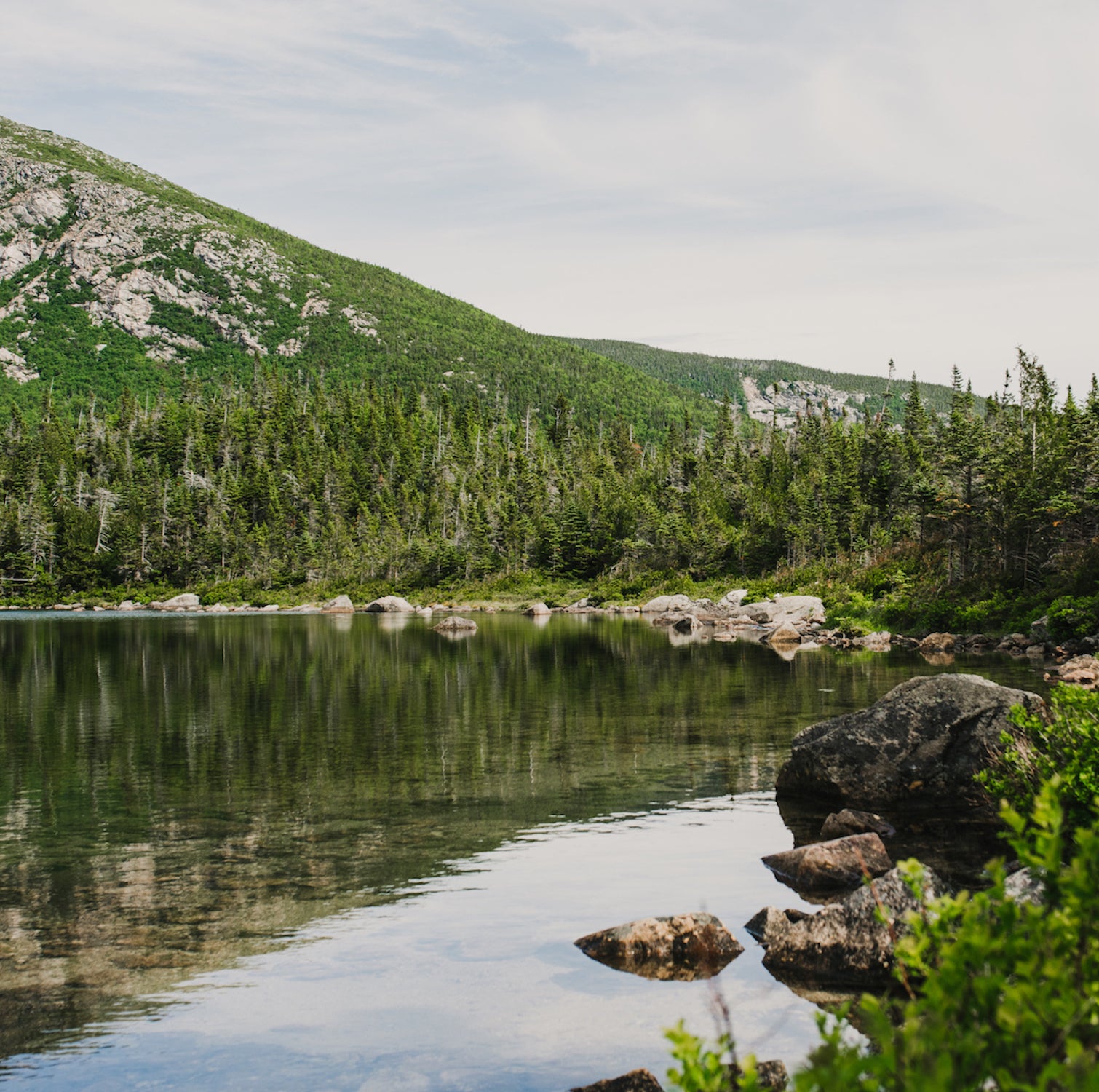Even if youÔÇÖve never set foot in New England, you probably know Katahdin by its reputation: MaineÔÇÖs highest peak,╠řthe storied terminus of the Appalachian Trail,╠řthe spot where . You might not know that a hiker canÔÇÖt simply show up at a trailhead there╠řand start hoofing it up the mountain. Or that Katahdin isnÔÇÖt found, as some reasonably assume, at Katahdin Woods and Waters National Monument, ╠řin 2016.╠ř(ItÔÇÖs next door.)╠řYou almost certainly wouldnÔÇÖt recognize the names of the other neighboring parks and preservesÔÇöeach administered by a different outfit and governed by different rulesÔÇöthat together make the Katahdin region arguably the East CoastÔÇÖs finest wilderness-recreation bloc.
And so, a primer. The patchwork management of MaineÔÇÖs wild and╠řwoolly╠řnorth woods can be confusing for a first-time visitor. HereÔÇÖs what a would-be Thoreau needs to know.
Baxter State Park
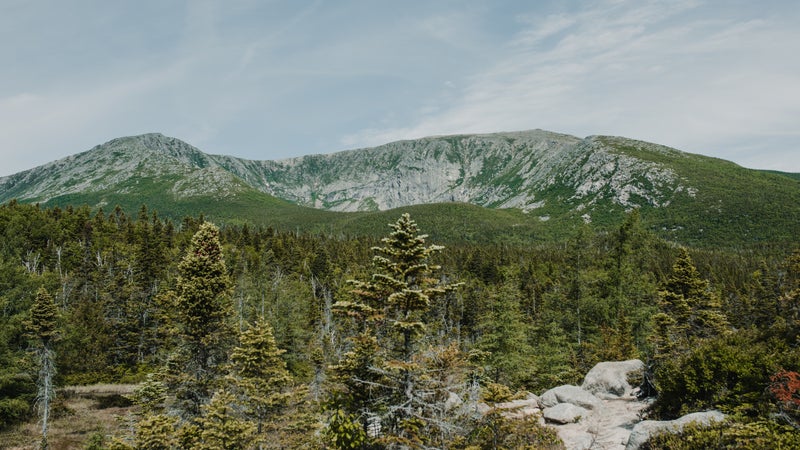
WhatÔÇÖs there: Mile-high Katahdin, for one. More than a half-dozen intersecting trails reach its summit,╠ř, with most of them falling in the alpine zone╠řfor miles and requiring some scrambling or climbing on iron rungs. AT thru-hikers start or finish their trek on the mountainÔÇÖs western slope, but the showstopper is the eastern approach called the Knife Edge, a boulder-strewn ridge walk of just over a mile where the mountainÔÇÖs spine is sometimes all of three╠řfeet wide╠řwith a 2,000-foot drop╠řon either side. Less exhilarating but equally sublime is Chimney Pond, tucked into a cirque on the mountainÔÇÖs north side, near a cluster of coveted .╠ř
But thereÔÇÖs more to Baxter than Katahdin. The 330-square-mile wilderness park encompasses more than 40 mountain peaks, backcountry ponds full of native brook trout, and a handful of idyllic cabins and campgroundsÔÇöall accessed by one gravel road and some 220 miles of trail. One of MaineÔÇÖs most underrated hikes is the Traveler Mountain Loop, near the parkÔÇÖs north entrance, which stays above treeline for more than half of its 11 miles. The trail ends╠řat TravelerÔÇÖs 3,551-foot summit, and╠řit has much of KatahdinÔÇÖs grandeur and a fraction of its foot traffic.
Who runs it: The state, with limitations. MaineÔÇÖs governor in the early twenties, Percival Baxter, wanted the state to acquire and protect Katahdin and its surroundings. His initiative failed, but after leaving office╠řhe spent 30 years buying the land╠řand deeding it to the people of Maine. So while Baxter is a state park in name, it exists outside of MaineÔÇÖs park system, legally bound by deeds forbidding anything that might intrude on its unique character.
Getting in: Entrance is free if youÔÇÖre in a car with Maine plates; otherwise╠řitÔÇÖs $15. Things get tricky if you want to hike Katahdin. Unless youÔÇÖre waking up inside the park (campsites and cabins book up months in advance), youÔÇÖll need a day-use parking reservationÔÇöa DUPR, or ÔÇťdooper,ÔÇŁ in Baxter parlanceÔÇöto claim a space at a Katahdin trailhead. Non-residents can for $5 starting two weeks before a planned trip. On the morning of your DUPR, you must be at the parkÔÇÖs south entrance by 7 A.M.ÔÇöat 7:01, your space goes up for grabs to the DUPR-less hopefuls who often hover outside the gate. Once the park admits enough cars to fill the trailhead lots, Katahdin has reached capacity╠řand youÔÇÖre looking for an alternate hike.
Know before you go: Baxter has no cell service and no facilities with Wi-Fi. (Or electricity, for that matter.)╠řThe entrance gates are within a few miles of campgrounds with stores, but youÔÇÖll find nothing for sale inside the park, so come╠řprepared. Pets are forbidden, and kids under six canÔÇÖt go above treelineÔÇörangers will enforce both rules. Some trails have rather conservative cutoff times, and rangers may turn you around if youÔÇÖre caught hitting the trail too late in the day. Baxter is a bit of a rule-happy park, and so╠ř before heading in.╠ř
WhatÔÇÖs nearby: The recovering mill town of Millinocket, an AT trail town where you can gear up at╠ř╠řand eat amazing donuts at the ╠řwhile╠řadmiring thru-hikersÔÇÖ signatures on the ceiling panels. Lodging in town is mostly budget motels, with a few campgrounds and lodges clustered outside the park entrance, including the sprawling .╠ř
Katahdin Woods and Waters National Monument
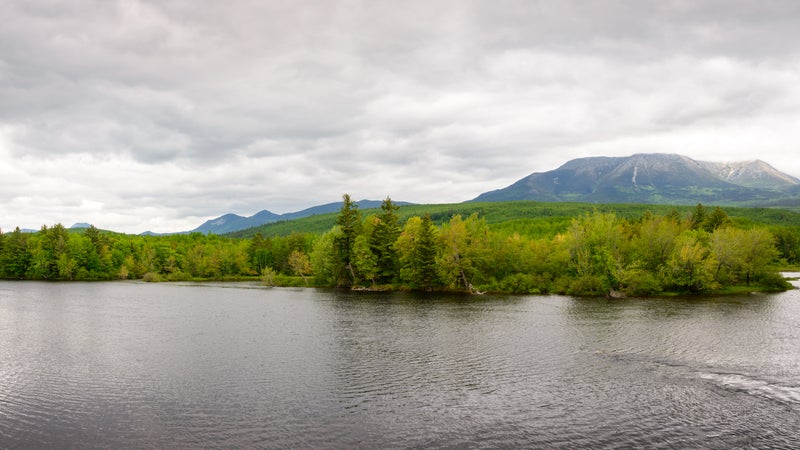
WhatÔÇÖs there: KatahdinÔÇÖs forested foothills, several of them bald-topped, their summits accessed along 30 miles of the . Mountain bikers come╠řfor a few dozen miles of old forest roads, and paddlers watch for moose along the . The monument also has some of the planetÔÇÖs best stargazing,╠řas by the .╠ř
Who runs it: The , after President ObamaÔÇÖs Interior Department accepted a gift of 87,500 acres from ,╠řthe Mainer cofounder of BurtÔÇÖs Bees.╠ř
Getting in: As of yet, the monument has no entrance stations, so thereÔÇÖs no fee. Camping is free, too, available on a first-come, first-serve basis in a handful of primitive sites and lean-tos scattered throughout the park. Katahdin Woods and Waters abuts Baxter to the east, but itÔÇÖs a wilderness borderÔÇöyou can't enter╠řone park from the other by car.╠ř
Know before you go: As a new NPS unit, the monument is still light on frontcountry╠řattractions, other than a 17-mile scenic driving loop with╠řoverlooks and interpretive displays that╠řwill tax any lower-clearance vehicle. (As will all the monumentÔÇÖs roads.)╠řThereÔÇÖs no road connecting╠řthe monumentÔÇÖs north entrance to its south entrance, and itÔÇÖs a 90-minute drive between the two╠řon roads outside the park, so seeing the whole place requires some trip planning. There is next to no ranger presence, and, as in Baxter, cell service is nil. Leashed dogs are welcome.
WhatÔÇÖs nearby: A rural stretch of Maine, without much for amenities. You can get surprisingly good barbecue at in Patten, then check out a replica 19th-century logging camp at the . Near the monumentÔÇÖs north entrance, is a mellow old sporting camp that serves incredible family-style meals (currently available for╠řtakeout only).
Penobscot River Trails
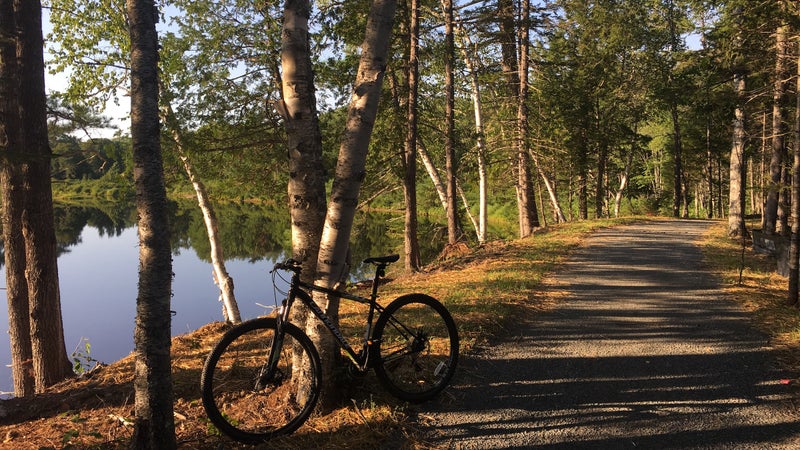
WhatÔÇÖs there: Some (that serve as╠řski trails in the winter) along the East Branch of the Penobscot River, just south of the national monument. The private park opened just last year, and╠řitÔÇÖs maybe the most manicured trail system in New England, where bikers still have to watch out for ambling╠řmoose and black bears.╠ř
Who runs it: , a philanthropic foundation╠ř╠řretired finance titan Gilbert Butler, who bought the former timberland and funded construction of the trails and a pair of warming huts╠řthat look like small national-park lodges.
Getting in: Park in a lot right off the paved state highway, sign in at a visitor center that may or may not be staffed, and hit the trail. There is no fee.╠ř
Know before you go: Ordinarily, Penobscot River Trails has a fleet of mountain bikes and kayaks (and in the winter, skis and snowshoes) to rent╠řby donation, although the rental program is on hold during the pandemic. No dogs, ebikes, or camping allowed.╠ř
WhatÔÇÖs nearby: Not much! Medway, the next town south, has , a , and the rare lobster roll╠ř100 miles inland at╠ř.╠ř
Debsconeag Lakes Wilderness Area
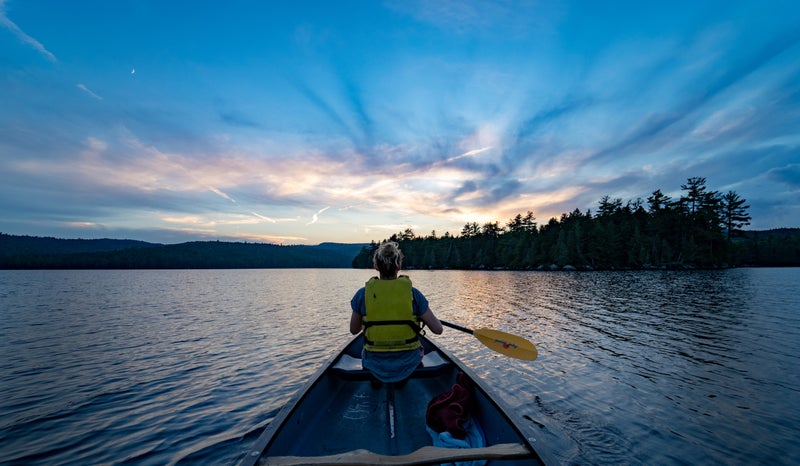
WhatÔÇÖs there: Some 46,000 nearly roadless╠řacres of lakes and ponds, most of them╠řconnected by well-maintained portage trails and dotted with lakefront campsites. Also 15 miles of the Appalachian Trail, some stands of old-growth forest, backcountry ice caves, and so, so many loons.
Who runs it: , which acquired the property in 2002 from Great Northern Paper Company, once MaineÔÇÖs largest landowner.
Getting in: In contrast to Baxter, Debsconeag is sparsely╠řregulated, with no permits, reservations, or fees. (No dogs are allowed, though.) Campsites are first come, first served and accessible╠řvia at the edges of the preserve.
Know before you go: As elsewhere, donÔÇÖt count on cell service. Mountain bikes are verboten. YouÔÇÖll want a vehicle with decent clearance to access the boat launches.
WhatÔÇÖs nearby: The AT leaves the northeast corner of the Deb╠řright next to the , a clutch outpost for last-minute tent stakes, fishing flies, and beer, as well as a staging area for northbound thru-hikers about to launch their final push towards Katahdin. ItÔÇÖs also a base camp for╠ř on the West Branch of the Penobscot, which separates Debsconeag from neighboring Baxter.╠ř
Beyond the Katahdin Region: the North Maine Woods
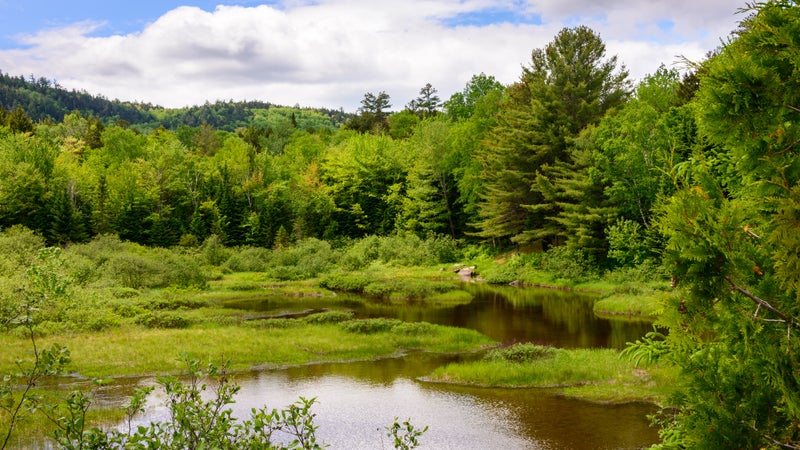
Wait, isnÔÇÖt it all the north Maine woods? Well yes, but╠řhead north or west along the rutted logging roads that spider out from the Katahdin region and sooner or later youÔÇÖll reach a gated checkpoint. This is run by , which administers recreational access to some 3.5 million acres of forests, mountains, lakes, and streams in the stateÔÇÖs undeveloped northeast corner.╠řMost of the land is owned by commercial timber interests, but there are hundreds of remote campsites, plus a few sporting lodges and housekeeping cabins catering to anglers, hunters, and paddlers. Among other things, North Maine Woods regulates access to the 92-mile , one of New EnglandÔÇÖs . The Allagash has its own fee structure, but out-of-state visitors elsewhere in the North Maine Woods a $16 entrance fee╠řplus another $15 for each night of camping.
This story was produced in partnership with magazine.


